7 Tips To Help You Find Your Golf Ball
Everyone hates to lose a golf ball, so here are some handy tips to avoid doing this

Roderick Easdale
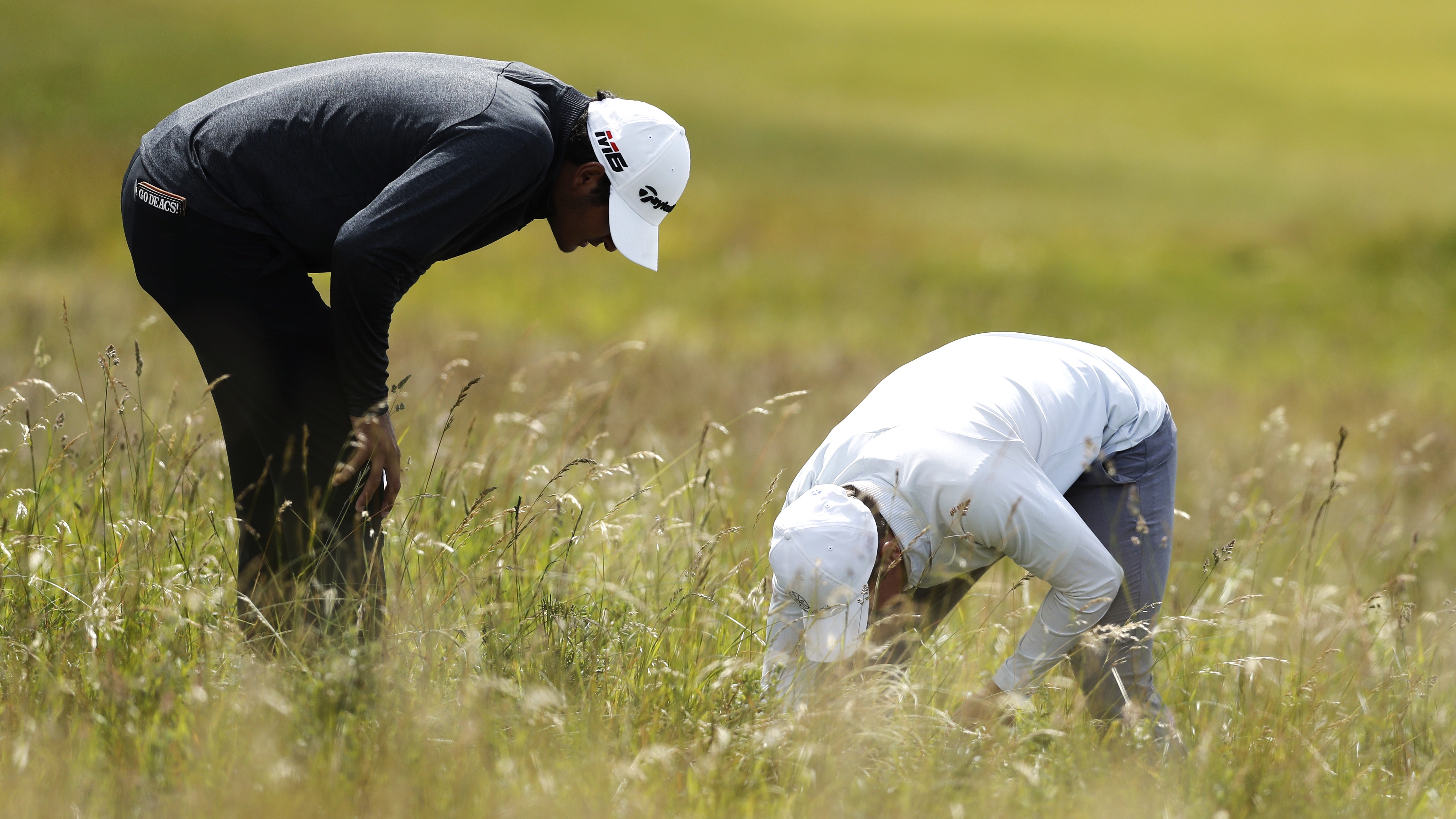
Few things increase a golfer’s anxiety levels more than the uncertainty of whether or not they’re going to find a stray golf ball, especially late in the round. With a good score going, everything possible must be done to prevent the untimely loss of two shots.
We should also say that to save ourselves money, it makes total sense to do our best to try and find golf balls on the course, especially if we are used to using one of the best premium models. After all, each Pro V1 is worth several dollars so to avoid having to buy another dozen so soon, you need to know how to properly look for your golf balls.
But how should you go about the search for a lost ball? It's not often discussed but we think these seven essentials tips in the video and article below will really increase your chances of success…
1. Keep watching your ball until the very end

A good shot straight down the middle does not need watching, and some golfers indeed do not watch these shots. They know it will be safe and bend down to pick up their tee as the ball is still completing its journey. But this is a habit to break with a poor shot, as a bad shot does need watching. With an annoyingly bad shot, it is also easy to look away in disgust or temper, if only involuntarily, but discipline yourself to follow the ball right until the very end. That way you may see exactly where it has ended up, rather than just having a general idea of the direction in which is was heading.
2. Be realistic about how far the shot has likely travelled
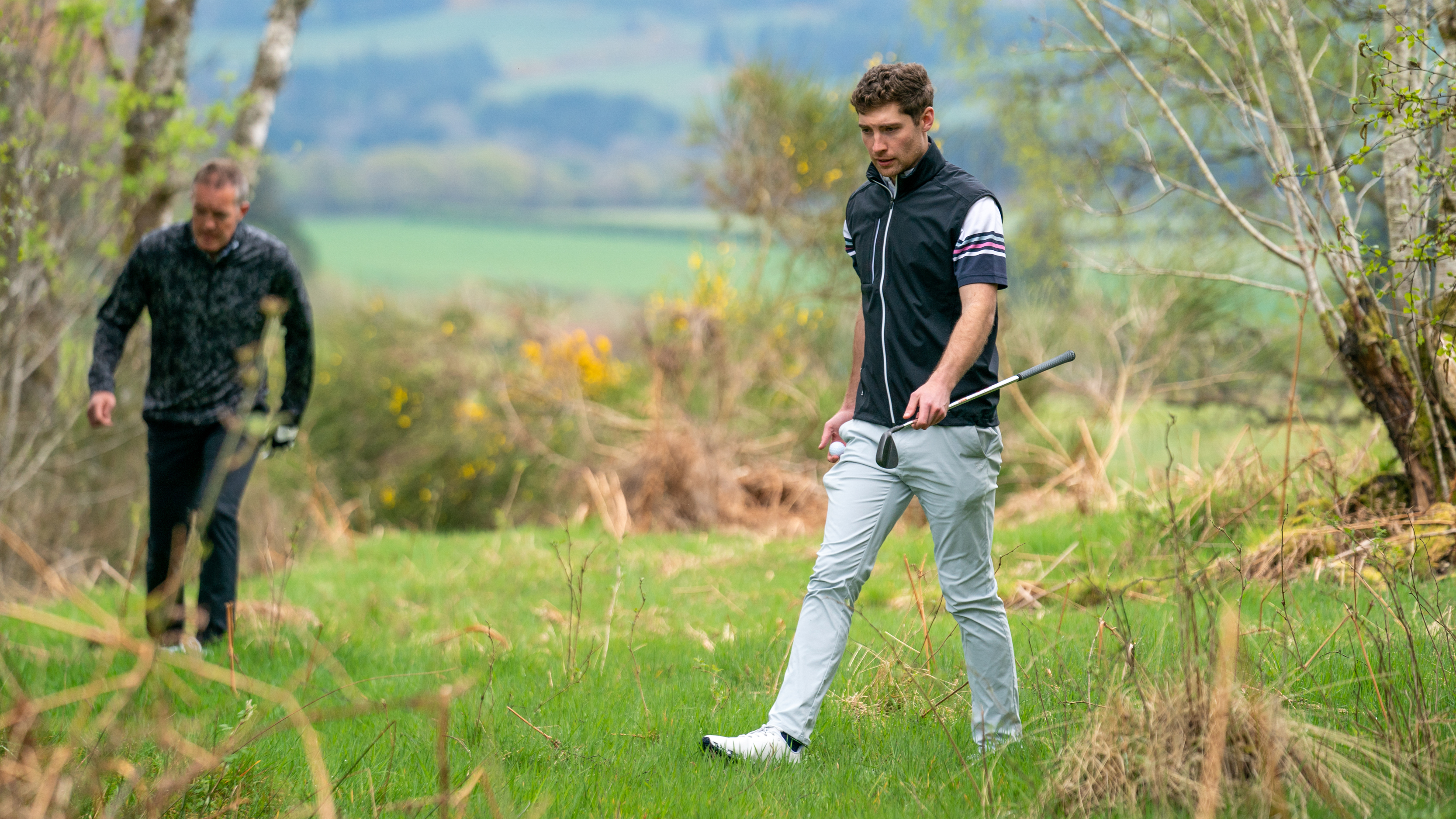
If you have hit a bad shot, it probably is not going to have gone as far as your best drives do, especially if you have miss-hit the shot. But if you made good contact, but simply got the angle or wind conditions wrong, then it may indeed have gone your usual distance. Also take into account what the wind was doing: if it was in your face than will further reduce the length of the shot, for example. A great help, especially on an unfamiliar course with little by the way of features, is to wear a GPS watch which measures shot length. Set this before you walk off and you can have an accurate measurement of how far you have gone, so know roughly where you should be focussing your search.
3. Put an identification mark on your ball
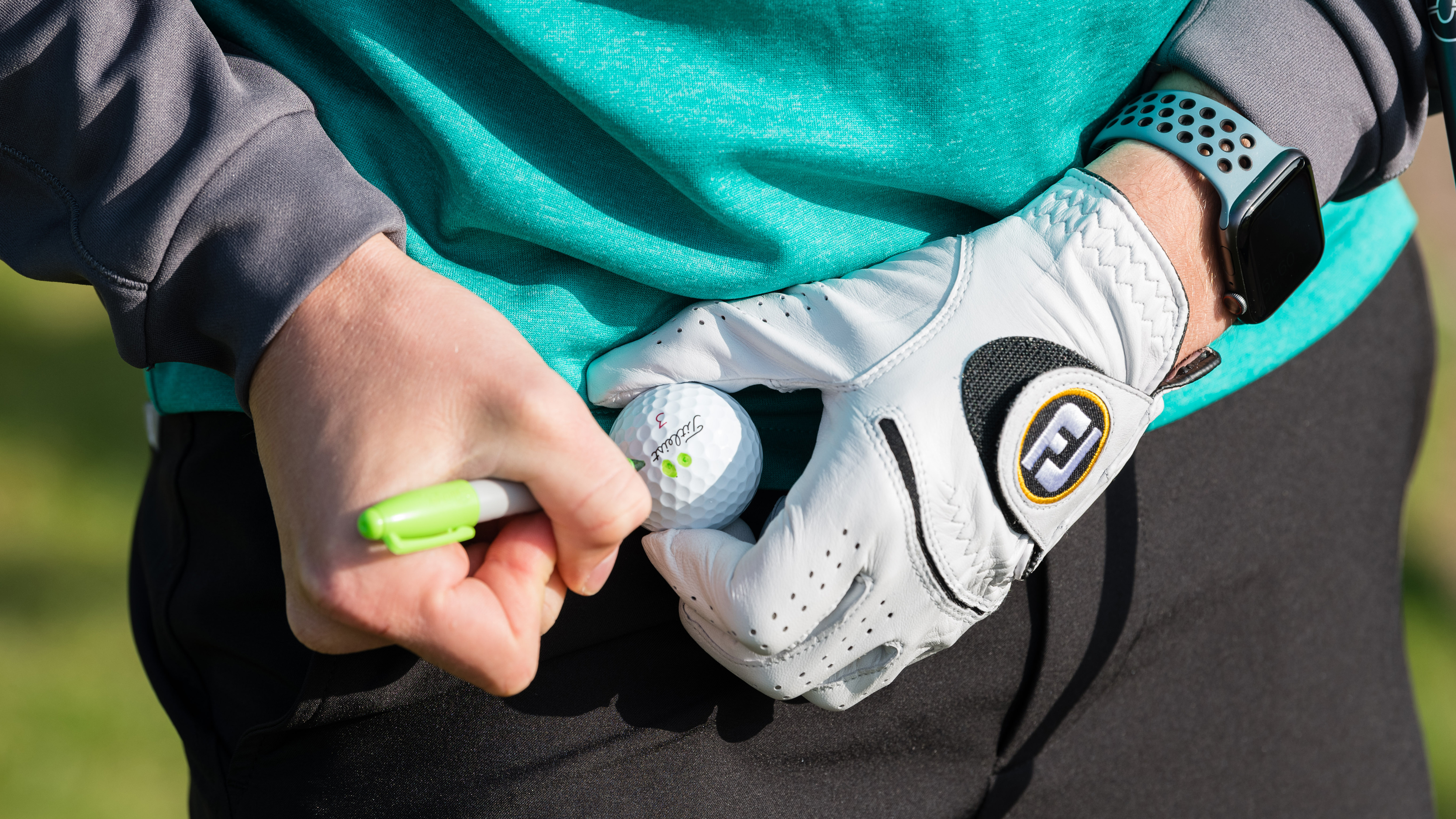
There are a few reasons why you should mark your golf ball. While it's not required as per the rules, a unique mark will give golfers a better chance of identifying their ball should they hit it into trouble. It will also allow absolute peace of mind that it is your ball and not to be confused with someone else's. We would also possibly recommend using golf balls with distinctive markings on them like the TP5 Pix and Tour Response Stripe models, or the Callaway Truvis or Triple Track finishes.
4. Get a good line on where the ball was going

Pick out something on the line of where your ball went which you will be able to use when you get nearer the ball. A patch of rough which appears darker when viewed from an elevated tee 200 yards away may not look like this when you get closer. Also avoid some distant marker that may become obscured. But if this is how you originally lined up the ball, no problem: just look around for another feature of the landscape that you can you translate your original identification point to.
Subscribe to the Golf Monthly newsletter to stay up to date with all the latest tour news, equipment news, reviews, head-to-heads and buyer’s guides from our team of experienced experts.
5. Walk into the area on the line of the shot
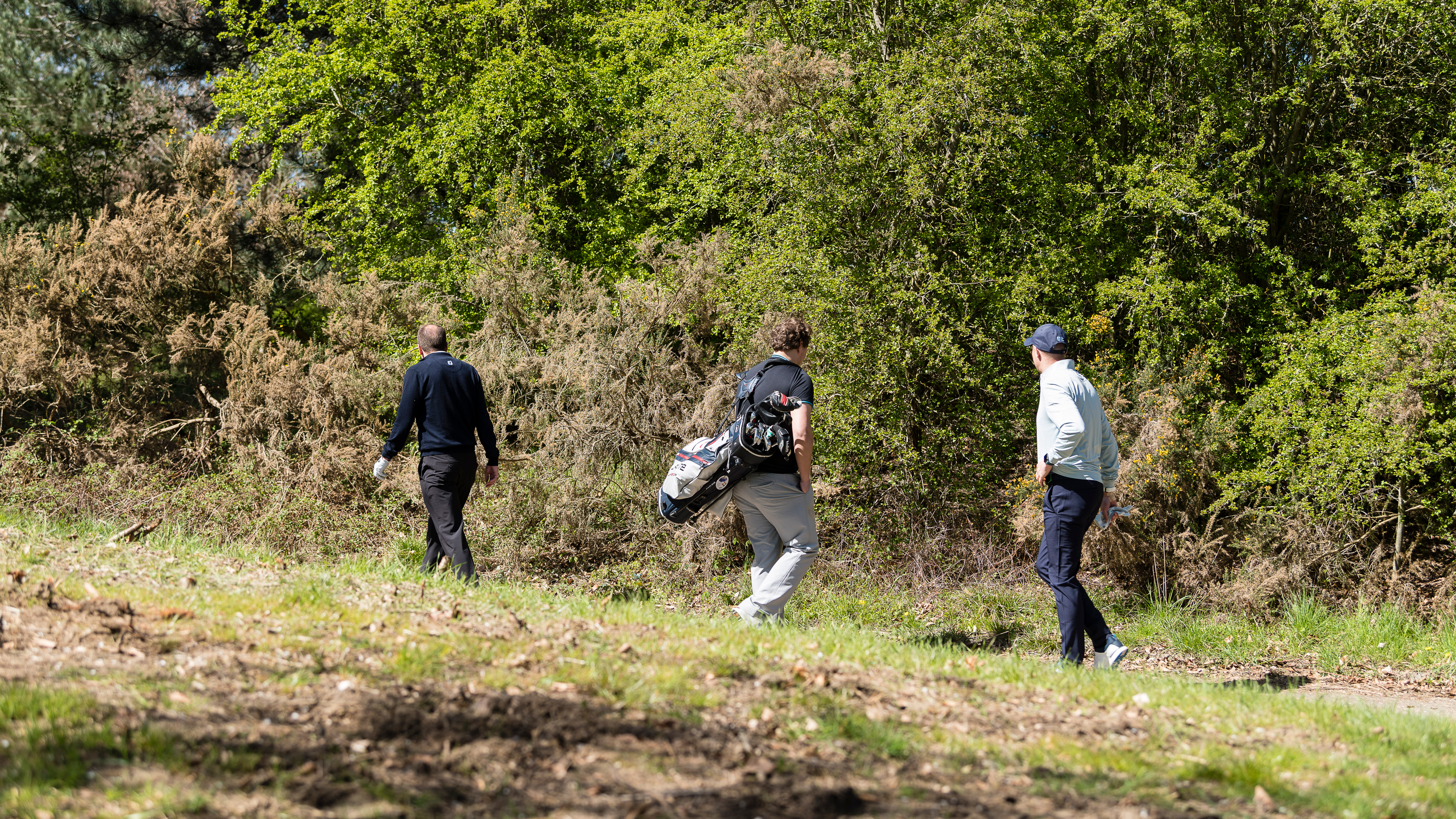
Having got a good line on the tee shot we recommend walking along this line towards where you think your golf ball is - assuming that is possible. If you do this, more often than not you will be pleased to find that you can call off the search early. If that doesn't work then we recommend patrolling the target area up and down in a fairly regimented fashion. Sometimes walking the same way means you might not be able to see the ball compared to a different angle.
6. Ask your playing partners to watch your shot

If you are playing into the sun, and you forgot your sunglasses, it makes perfect sense to have a word with your playing partners asking them to watch your shot closely. Just by making sure they are paying attention you are more likely to find wayward shots.
Additionally, no-one else is going to look for your ball overly enthusiastically if you’re seen as someone reluctant to venture into the rough and help when they have strayed offline. This is definitely one of the etiquette mistakes to avoid in golf. So show willing when the call arises, and your fellow competitors will be far more inclined to reciprocate as and when required later in the round.
7. Move grass and leaves when searching
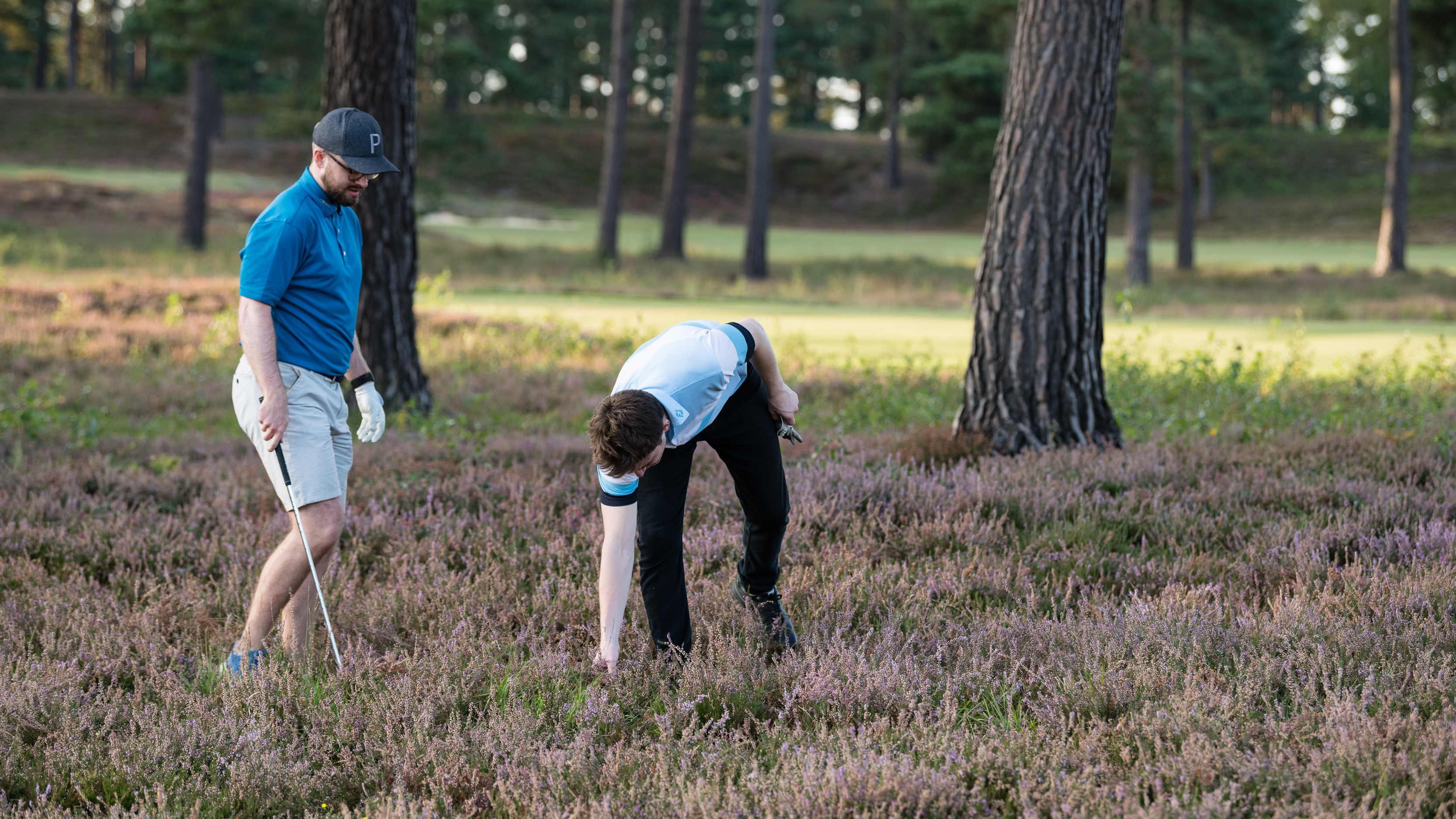
While there is still a penalty if you accidentally move your own golf ball in certain circumstances, in the new rules introduced in 2019, the penalty for accidentally moving your ball while searching for it was removed. As a result, we recommend being thorough in areas of long grass, bushes and trees by moving things around. If you do accidentally move your ball when searching, you must replace it as close to its original position as possible.
And if you do find yourself searching for lost balls too often, we would suggest investing in one of three things...
1. An extending ball retriever
2. A golden retriever - or other pooch - with a well-trained nose for sniffing out Titleist Pro V1s
3. Best of all, some lessons with a PGA pro to help iron out the underlying swing faults that are causing you to regularly hit slices and pulls into trouble!
How long can you search for a lost golf ball?
The Rules of Golf allow you to search for up to three minutes from the moment you or your caddie first arrives at where you think they ball may be. You are also allowed a reasonable amount of time beyond this period to identify if a ball as yours if that ball has been found within the three-minute period.

Sam is Golf Monthly's Senior E-commerce Editor which mean's he oversees everything E-com related on the site.
This takes the form of creating and updating Buying Guides, reviews, and finding bargain prices for deals content.
Working with golf gear and equipment over the last seven years, Sam has quickly built outstanding knowledge and expertise on golf products ranging from drivers, to balls, to shoes.
He combines this knowledge with a passion for helping golfers get the best gear for them, and as such Sam manages a team of writers that look to deliver the most accurate, insightful, and informative reviews and buying advice. This is so the reader can find exactly what they are looking for, at a good price.
Additionally Sam oversees Golf Monthly voucher/coupon content which seeks to find you the best offers and promotions from well-known brands like Callaway, TaylorMade and many more.
Unfortunately, Sam is not a member of any club at the moment but regularly gets out on the golf course to keep up the facade of having a single-figure handicap.